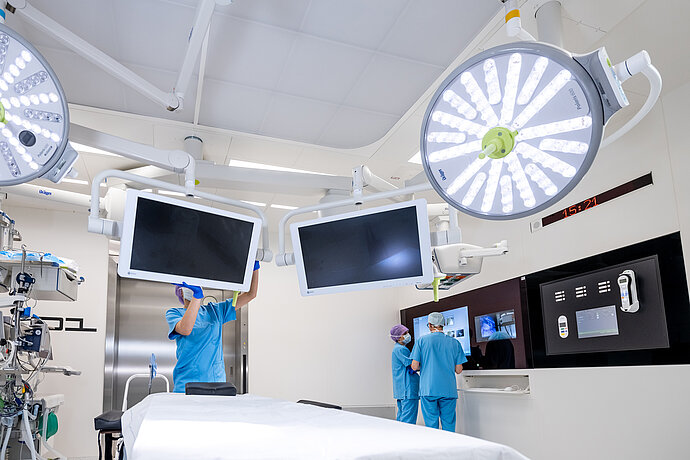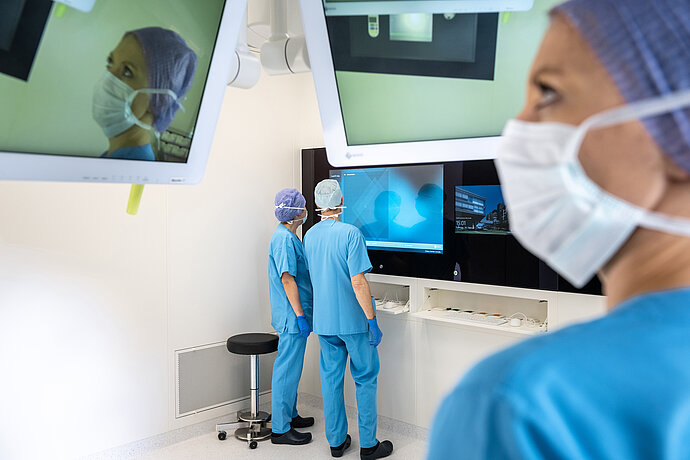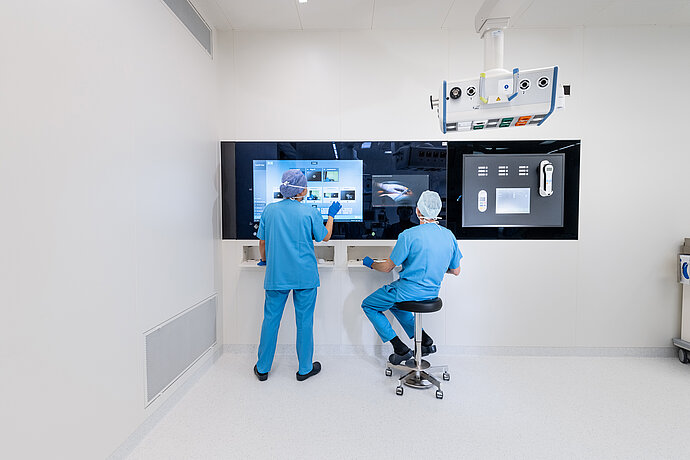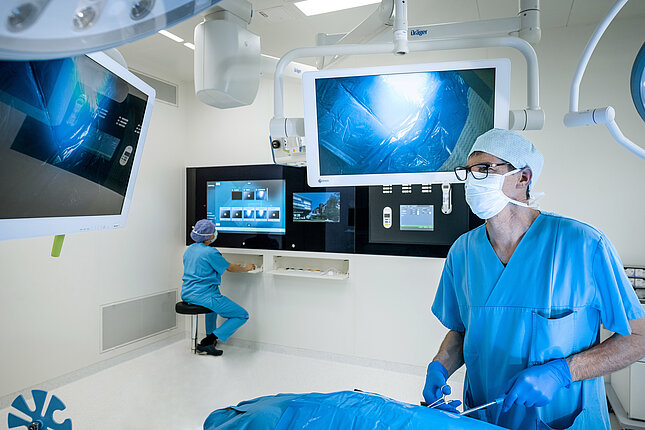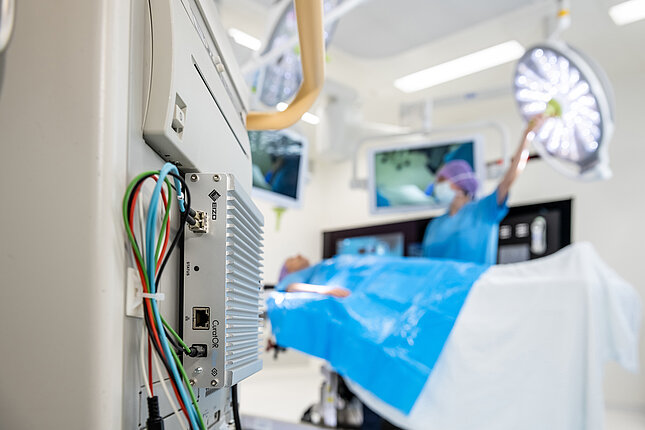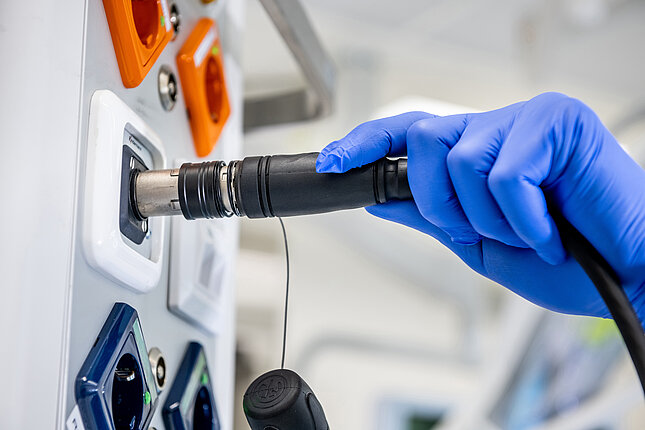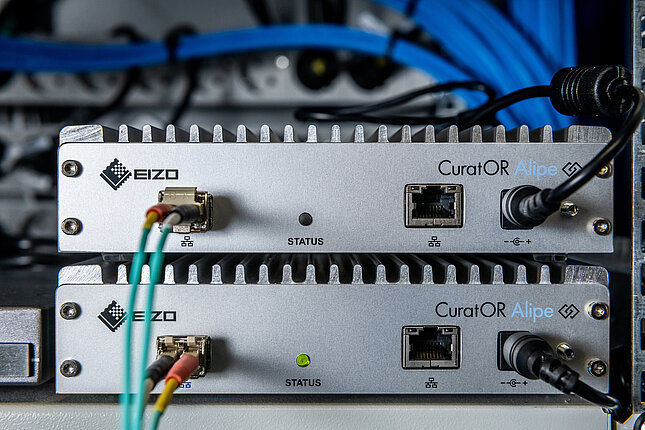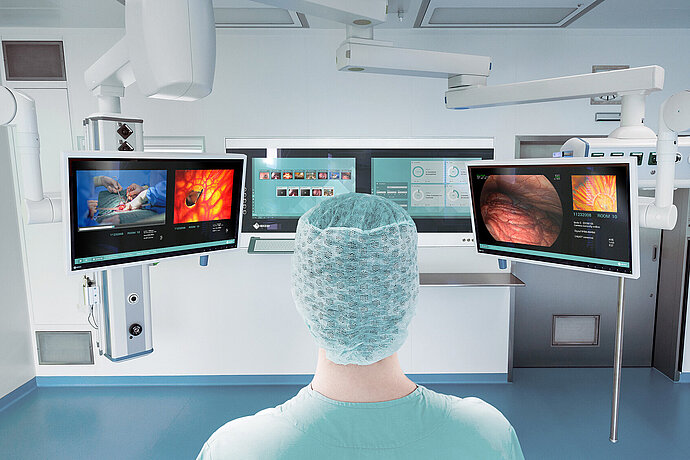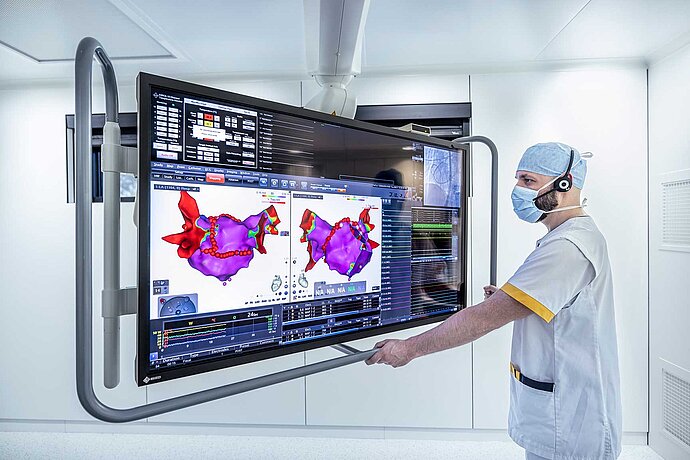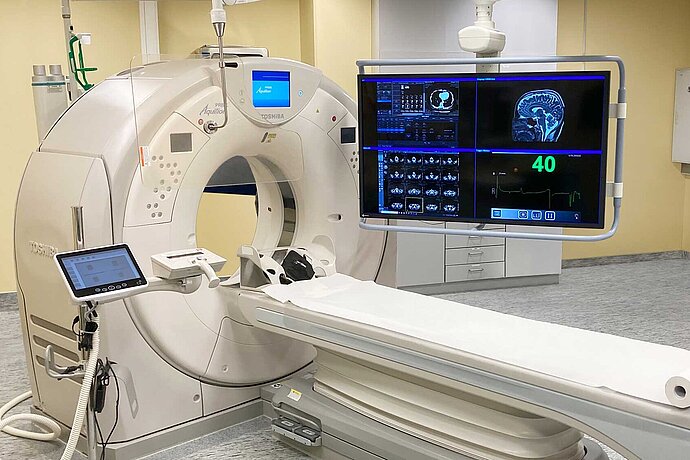Until recently, Dornbirn Hospital in the Austrian state of Vorarlberg used conventional towers for surgery with only one monitor as visual support during medical procedures. However, ideally, the surgeon and assistants should have separate displays to get an optimum overview of what is going on.
CuratOR Case Study
Dornbirn Hospital, Austria
Image and patient data without any technical complications. Flexible software can be easily integrated into third-party EDP environments.
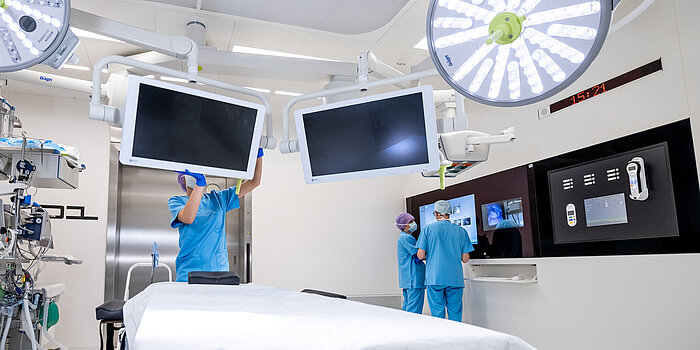
For this reason, Dornbirn Hospital incorporated imaging systems into its newly built operating rooms at the end of 2018, and since then it has used EIZO GmbH’s CuratOR Surgical Panels.
These panels come in the form of the model SP2-46T-24 glass medical image viewer, which is complemented by the smaller model SP1-24 displays. The company-owned, user-friendly software, CuratOR Caliop, can be easily integrated into existing EDP structures and supports all of the hospital’s work processes. Thanks to video-over-IP technology, CuratOR Alipe can transfer image and patient data to specific operating rooms in uncompressed format, with zero loss and over the lowest latency. In this way, the modern video system can display different image sources at the same time and offer comprehensive and quick access to all the important data.
Medical staff need to be able to operate imaging elements in the OR in a quick, easy and clear way, particularly in stressful situations, so that they don’t get distracted by the technology while performing complicated procedures. “Handling towers for surgery in our old operating rooms was often very cumbersome, which is why we wanted to modernise our video systems in conjunction with our new operating rooms,” says Peter Palombo, Technical Manager at Dornbirn Hospital. “We placed special emphasis on intuitive operation, optimal low-latency image structure and simple system configuration.”
Therefore, Dornbirn Hospital published a tender for a new imaging system in the summer of 2017. In the weeks that followed, different concepts were presented by suppliers at Dornbirn hospital; EIZO’s pitch presentation won the day with the CuratOR Surgical Panels. A total of seven operating theaters were equipped in two construction phases.
Clinic-specific image display with intuitive usability
The SP1-24 and SP2-46T-24 Surgical Panels are the heart of the new imaging system in all operating rooms. The SP1-24 is the central control unit and displays images on a 24-inch monitor. “When developing our user interfaces, we focus on making them easy for OR nursing staff to use and adapt them to the users’ needs,” explains Matthias Lubkowitz, Vice President of the OR Solutions Department at EIZO GmbH. “Third-party software can also be integrated into our panels thanks to our compatible system. We adapt to the hospital’s workflow – not the other way around.” For example, EIZO supports clinical standards such as DICOM or HL7, but can also easily configure and individualise the required data elements for the hospital if necessary. In this way, clinic-specific applications can be incorporated on site and at short notice.
SP2-46T-24 Surgical Panels with 46- and 24-inch screens complement the SP1-24. These are flush-mounted medical image viewing systems with a glass front. They can be built into the glass walls in rooms and function as a video distribution system and an image viewer. The 46-inch display is equipped with optional and intuitive touchscreen operation and its size makes it ideal for displaying images and streaming videos during operations. These images and videos can come from different sources at the same time. “The fully automated export of image data into our archive system is particularly simple and user-friendly,” says Palombo. “Menu navigation is completely intuitive so our staff can concentrate fully on the procedure and not get distracted by technical complications.” Data from the hospital’s central PACS and HIS can also be retrieved directly from the system. This means the OR nursing staff always have access to all important information.
Video-over-IP technology with fibre optic cables that transmit with zero latency and loss
EIZO uses video-over-IP technology for fast real-time transmission of video data. Only then can enormous quantities of data be transmitted from Full HD and 4K video signals at the same time and in uncompressed format. In order to achieve this, fibre optic cables were installed, which can later be used for even higher resolutions such as 8K and 16K. However, laying the cables posed a particular challenge. “Fibre optic cables are made of glass and are often located in mobile medical supply units (DVE) on the ceiling of operating rooms. So you have to be particularly mindful of the risk of broken cables,” explains Lubkowitz. “Our on-site partner, Sanova, has extensive experience in laying these fibre optic cables and has therefore taken on this task.”
Another challenge when installing the video system was integrating third-party hardware and the in-hospital network switch. “Our agile project management team is able to flexibly adapt to user-specific needs and undefined interfaces,” explains Lubkowitz. “This enabled us to quickly integrate all components – ranging from C-arms to endoscopes to mobile OR equipment. New components can be integrated at a later point in time thanks to our user-friendly system that has Plug-and-Play capability.” The in-house software, CuratOR Caliop, represents the master control system of the entire video-over-IP solution, the CuratOR Alipe. For data protection purposes, the video signal can only be processed within one closed network per operating room. Only after receiving approval from the staff responsible for data protection can the encrypted data be transmitted beyond the OR – to another OR or conference room, for example.
Customer-focused, fast support
Before the system went live, the entire OR nursing staff participated in extensive training organised by EIZO and Sanova experts. Employees attended two sessions held over four days, which was designed to make them familiar with the new equipment and its capabilities. During the first days of real use, Dornbirn Hospital was supported locally so that questions could be answered and requests for changes could be dealt with immediately. “Our staff are delighted with the video systems,” sums up Palombo. “The individual elements are simple, fast and clear to use. We can now access numerous new features without having to change the way we work. EIZO’s system blends in perfectly with our day-to-day operations in the OR.” EIZO’s after-sales service supports Dornbirn Hospital through an all-inclusive package, which provides full maintenance for five years. Sanova Pharma GmbH acts as the direct point of contact on site and can be reached at any time to quickly react to problems. If necessary, EIZO can also remotely connect to the systems. This guarantees fast and effective support.
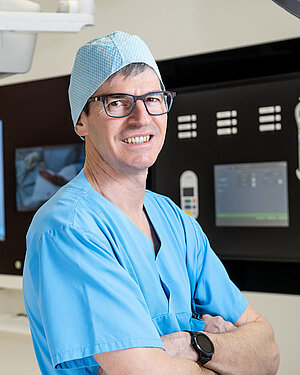
“Our staff are delighted with the video systems. The individual elements are simple, fast and clear to use. We can now access numerous new features without having to change the way we work. EIZO’s system blends in perfectly with our day-to-day operations in the OR.”
Peter Palombo
Technical Manager at Dornbirn Hospital
Inaugurated in 1983, Dornbirn Hospital is now the only public hospital in the Austrian state of Vorarlberg and is also a municipal hospital. It has about 280 beds and numerous faculties – from orthopaedics, to general surgery, to a maternity ward that witnesses the birth of about 1,500 babies per year. A postnatal ward is also attached to the maternity ward and has about 30 beds. At present, the hospital employs 900 staff members.
